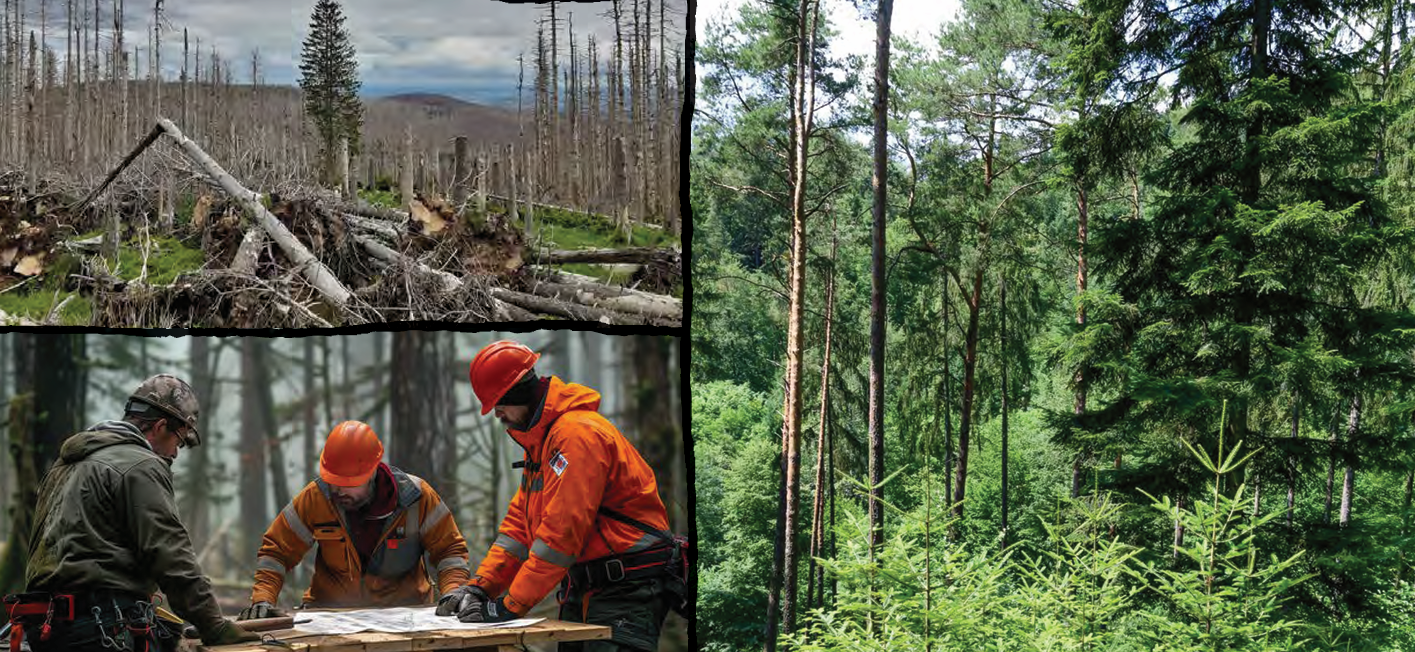
The Austrian Biomass Association (Österreichischer Biomasse-Verband), with support from Austria’s Federal Ministry for Agriculture, Forestry, Regions, and Water Management, has published an in-depth analysis of the current state of Austria’s forests. The report explores how forest management is closely affected by climate change and the role of bioenergy within this context.
Forest Conversion into Climate-fit Forest
The report outlines the growing threats to Austria’s forests due to rising temperatures, droughts, and extreme weather. These changes, especially in eastern Austria, put pure coniferous stands at risk. As a result, forest owners are transitioning to mixed stands with diverse species that better resist drought and heat.
A Complex Scenario
The authors also highlight the role and impact of EU’s climate and biodiversity regulations on forest management and the importance of Bioenergy in reaching the EU’s climate targets. In this context, bioenergy plays a critical role in meeting the EU’s renewable energy targets, accounting for 56% of its renewable energy supply, and is an essential component in achieving climate goals.
Storing Carbon with Wood
The report underscores the importance of using wood in construction and bioenergy to store carbon and reduce reliance on fossil fuels respectively. In Austria, bioenergy production exceeds consumption. Woody biomass, such as fuelwood, wood chips, bark, and pellets, generates almost 40% of domestic energy and meets more than 14% of the country’s total energy demand.
Protecting the Climate
The link between bioenergy and climate protection is a central theme. Wood energy is climate-neutral when forests are managed sustainably. In well-managed forests, only a small portion of trees is harvested each year. The remaining trees continue growing and absorbing CO2. Thinning and harvesting are carefully planned to align with natural regrowth, ensuring the forest replaces the harvested biomass over time. If wood stocks remain stable or increase, as observed in many forests, there is no long-term carbon debt associated with using wood for energy.
Do you want to know more? Download the full document in English.




